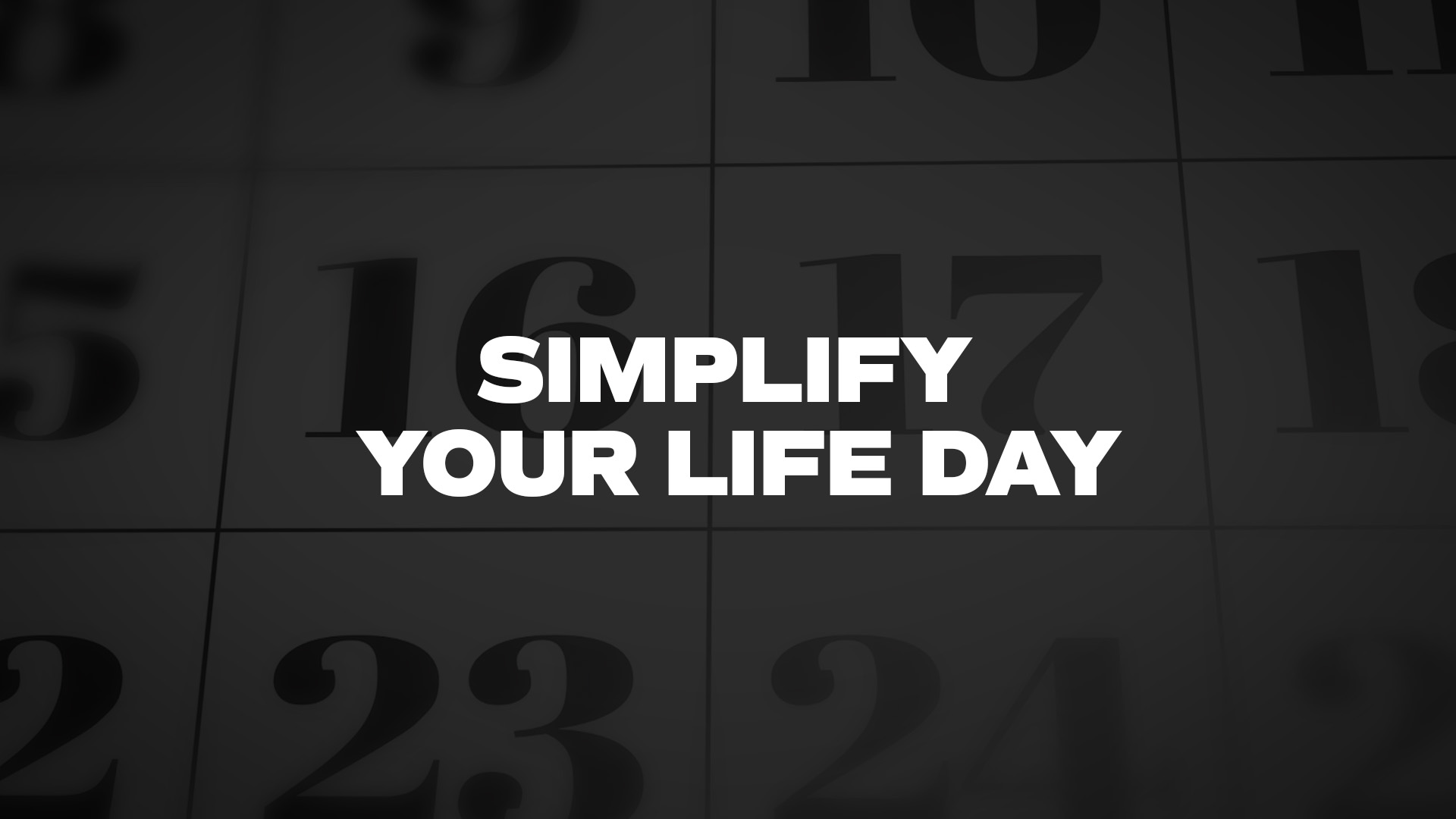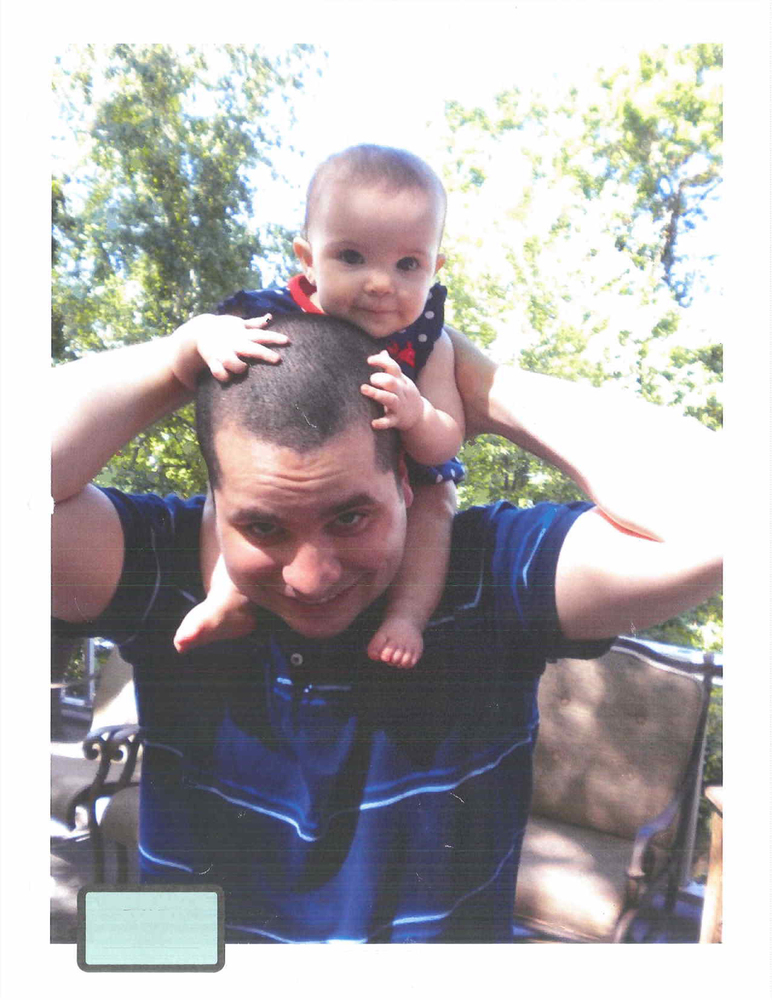Simplify Your Life: A 30-Day Minimalist Experiment

Table of Contents
Week 1: Assessing and Decluttering Your Belongings
This first week focuses on assessing your possessions and starting the crucial process of decluttering. We'll delve into the minimalist philosophy and provide a practical plan to tackle your belongings effectively.
The Power of a Minimalist Mindset
Minimalism is more than just getting rid of stuff; it's about intentional living. It's about consciously choosing to own only what adds value to your life, aligning your possessions with your core values. This value-based living is the foundation of a successful minimalist lifestyle.
- Define your values: What truly matters to you? Family, health, creativity, learning? Identifying your core values will help you determine what to keep and what to let go of.
- Identify possessions that don't align with your values: Be honest with yourself. Are there items you hold onto out of obligation, guilt, or fear of missing out?
- Let go of sentimental attachment: While sentimental items hold memories, clinging to them can prevent you from moving forward. Consider taking photos of cherished items before letting them go, preserving the memories without the clutter.
Creating a Decluttering Plan
Don't try to declutter your entire home in a day! Start small and build momentum. A step-by-step approach is key to success in this minimalist experiment.
- Start with one small, manageable area: A drawer, a shelf, or even just a single bag. This creates a sense of accomplishment and motivates you to continue.
- Use the 20/20 rule: If you haven't used an item in 20 months and it costs less than $20, it's likely time to let it go. This simple rule can help you quickly identify unnecessary items.
- Donate, sell, or recycle items: Give your unwanted items a new life. Donating to charity provides a fulfilling experience, and selling items can even generate some extra income. Recycling ensures environmentally responsible disposal. This is a crucial aspect of responsible decluttering and moving towards a minimalist home.
Digital Minimalism
Decluttering isn't limited to physical spaces. Our digital lives are often just as cluttered as our physical ones. This week, we’ll also focus on decluttering our digital spaces.
- Unsubscribe from unwanted emails: Reduce the noise in your inbox by unsubscribing from newsletters and promotional emails you no longer read. A clean inbox contributes significantly to reducing digital clutter.
- Delete unused apps: Go through your phone and computer, deleting apps you haven't used in months. A streamlined device improves functionality and reduces visual clutter.
- Organize digital files into folders: Create a well-organized system for storing your documents, photos, and other digital files. This enhances efficient file management and reduces the stress of searching for files.
- Back up important data: Before deleting anything, always ensure you have backed up important files to avoid data loss.
Week 2-3: Streamlining Your Daily Routines
Now that you’ve decluttered your physical and digital spaces, it's time to streamline your daily routines to improve efficiency and reduce stress.
Optimizing Your Schedule
Effective time management is crucial for a minimalist lifestyle. Learn to prioritize tasks and eliminate time-wasting activities.
- Identify time-wasting activities: Are you spending too much time on social media, watching TV, or engaging in unproductive activities? Be honest about where your time goes.
- Use a planner or calendar: Schedule your tasks, appointments, and even leisure time. This helps you visualize your day and stay organized.
- Learn to say "no": Don't overcommit yourself. Politely decline requests that don't align with your priorities or add unnecessary stress.
- Delegate tasks when possible: If you can delegate tasks to others, do so. This frees up your time and energy for more important activities.
Simplifying Your Consumption Habits
Mindful spending is essential for maintaining a minimalist lifestyle. Reduce impulsive purchases and make conscious decisions about what you buy.
- Create a budget: Track your income and expenses to understand where your money is going. This helps you identify areas where you can cut back.
- Track spending: Use budgeting apps or a spreadsheet to monitor your spending habits. This helps you identify patterns and make more informed choices.
- Shop intentionally: Only buy what you truly need and will use. Avoid impulse purchases by taking time to consider whether an item aligns with your values and needs.
- Consider borrowing or renting instead of buying: Borrowing books from the library or renting tools instead of buying them can save money and reduce clutter.
Cultivating Simple Pleasures
Minimalism isn't about deprivation; it's about finding joy in simple things. Focus on experiences and activities that bring you happiness without requiring material possessions.
- Spending time in nature: Go for a walk, hike, or simply sit outdoors and enjoy the beauty of the natural world.
- Practicing mindfulness: Take time each day to focus on your breath and be present in the moment.
- Pursuing hobbies: Engage in activities you enjoy, whether it's reading, painting, gardening, or anything else that brings you joy.
- Connecting with loved ones: Spend quality time with family and friends. These connections are far more valuable than material possessions. This contributes significantly to achieving work-life balance.
Week 4: Maintaining Your Minimalist Lifestyle
The final week focuses on reflection, creating sustainable habits, and embracing the minimalist community for ongoing support.
Reflecting on Your Progress
Take time to reflect on your experiences during the 30-day experiment.
- What changes were the most impactful? Identify the aspects of minimalism that have brought the most positive changes to your life.
- What challenges did you face? Acknowledge any difficulties you encountered and how you overcame them. Learning from challenges is vital for personal growth.
- What did you learn about yourself? Minimalism is a journey of self-discovery. Reflect on what you've learned about your values, priorities, and habits.
Creating Sustainable Habits
Maintaining a minimalist lifestyle requires ongoing effort and commitment. Here are some tips for keeping the momentum going:
- Continue decluttering regularly: Set aside time each week or month to declutter and maintain a tidy space.
- Maintain a mindful approach to spending and consumption: Continue practicing mindful spending and avoid impulsive purchases.
- Incorporate simple pleasures into your daily life: Continue to prioritize activities that bring you joy and fulfillment.
Embracing the Minimalist Community
Connecting with others on a similar journey can provide support, inspiration, and accountability.
- Online forums: Join online communities dedicated to minimalism.
- Blogs and social media groups: Follow minimalist bloggers and influencers for inspiration and advice.
- Books and podcasts: Explore books and podcasts on minimalism to deepen your understanding and stay motivated.
Conclusion: Sustain Your Simplified Life with Continued Minimalist Practices
This 30-day minimalist experiment has hopefully provided you with valuable tools and insights for simplifying your life. By decluttering your surroundings, optimizing your schedule, and cultivating simple pleasures, you've likely experienced reduced stress, increased focus, more free time, and even greater financial freedom. Remember that intentional living and mindful consumption are key to sustaining a minimalist lifestyle. The journey towards a minimalist lifestyle is ongoing. It’s about continuous refinement and adaptation, not about perfection. Continue your minimalist journey beyond this 30-day experiment, and discover the lasting transformative power of simplifying your life! Start your own 30-day minimalist experiment today and discover the transformative power of simplifying your life! Find more resources and inspiration on [link to relevant resources].

Featured Posts
-
 Cape Town Elephant Seal Causes Traffic Chaos
May 31, 2025
Cape Town Elephant Seal Causes Traffic Chaos
May 31, 2025 -
 Death Of Muslim Man In France Far Lefts Response And Islamophobia Debate
May 31, 2025
Death Of Muslim Man In France Far Lefts Response And Islamophobia Debate
May 31, 2025 -
 Jaime Munguia Wins Redemption Against Bruno Caruso
May 31, 2025
Jaime Munguia Wins Redemption Against Bruno Caruso
May 31, 2025 -
 Sin Horno Empanadas De Jamon Y Queso Faciles Y Deliciosas
May 31, 2025
Sin Horno Empanadas De Jamon Y Queso Faciles Y Deliciosas
May 31, 2025 -
 Bernard Kerik Ex Nypd Commissioner Undergoes Hospital Treatment Expected Recovery
May 31, 2025
Bernard Kerik Ex Nypd Commissioner Undergoes Hospital Treatment Expected Recovery
May 31, 2025
